From Amman there is a route East that takes you past several castles in the desert. We rented a car and instead of doing this as a day trip loop , did the trip and carried on to Jerash and based ourselves there.
First castle we came across was Qasr Hraneh… built in the 8th century, about 710 they reckon… although scholars aren’t in agreement on what it was used for. The most likely scenario is that it was a khan (inn).
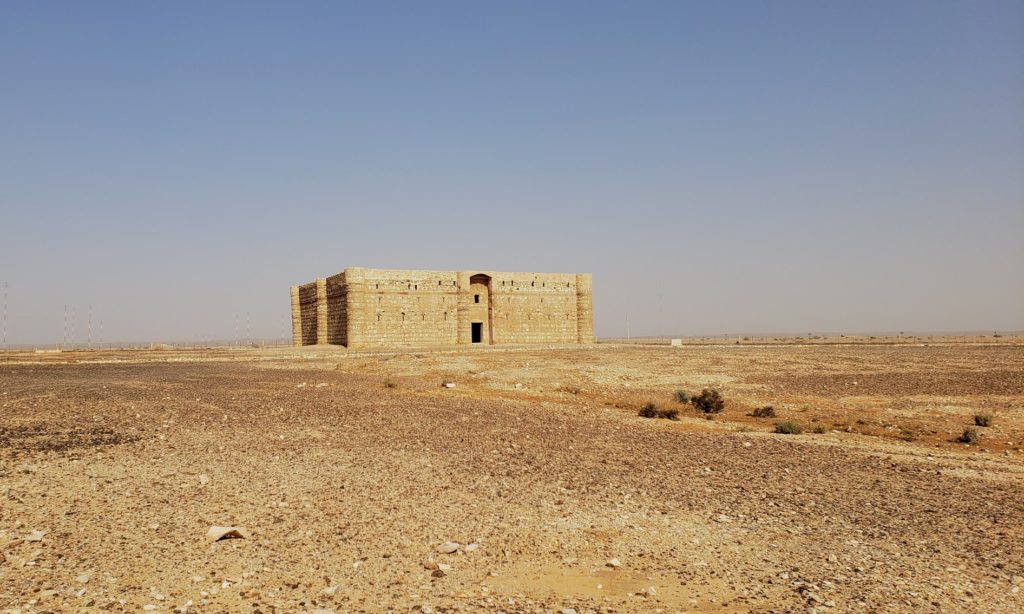

Another 10 minute drive and we got to Qasr Amra, also an 8th century building, this one is a Unesco World Heritage Site because of the incredible frescoes which decorate the reception hall and bathhouse.
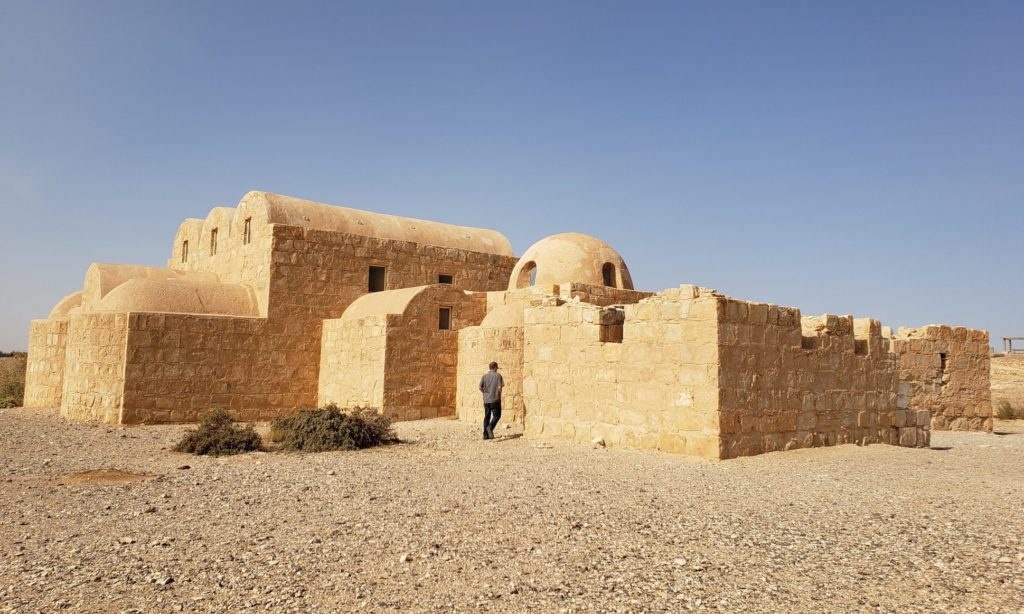
Qasr Amra was a hunting pavilion, used as temporary lodgings by members of the ruling Umayyad family in the early 8th century

There was an international team of people (mostly French speaking) who were restoring the frescoes that completely covered the walls and ceiling.
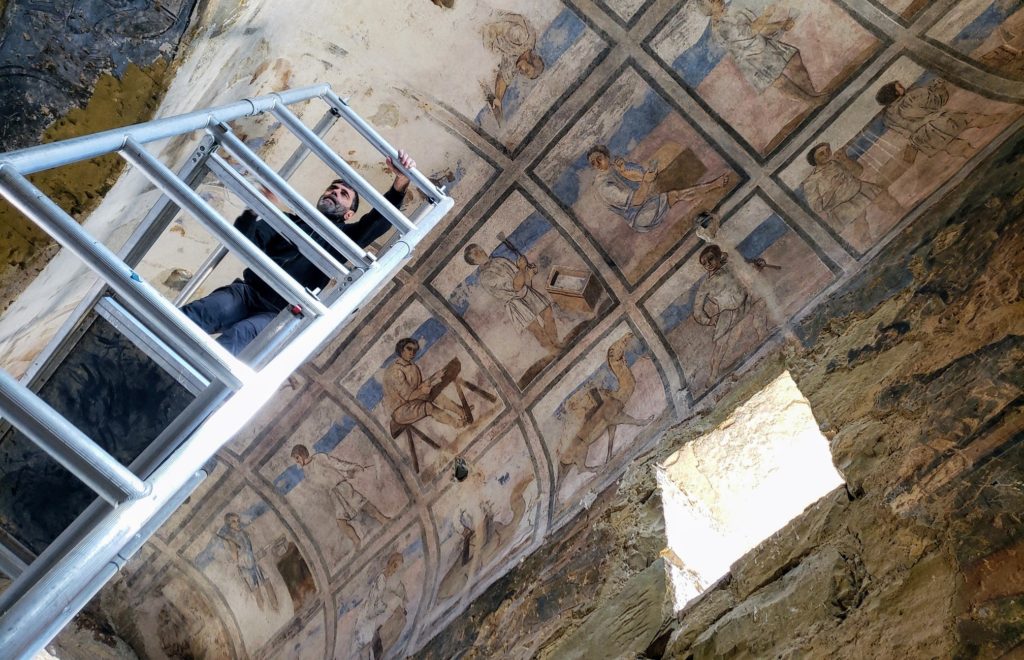
The richly decorated walls reflect secular art of the time. The photo above of the guy working on the ceiling frescoes shows in each square a man doing a a different job.
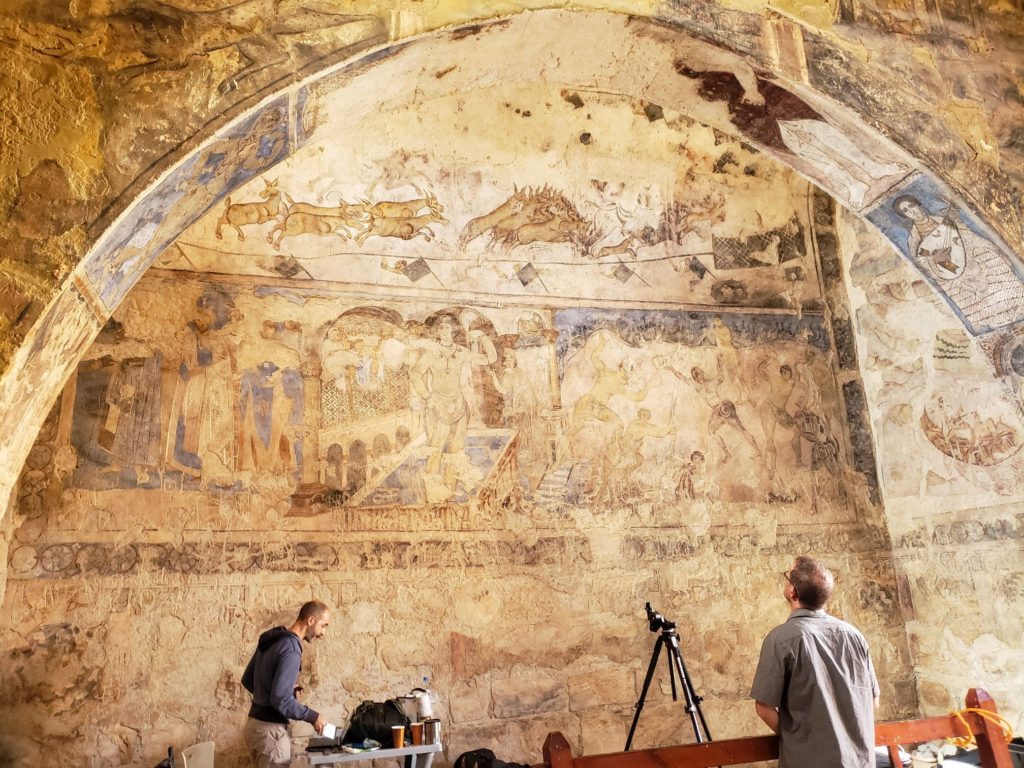
Driving on a further 20 minutes gets you to the oasis town of Azraq. We stopped here for a falafel and some bakery sweets. The shops are all labeled in Arabic but after some asking around we found the falafel shop. It was ridiculously cheap and really good – the grilled eggplant in it made it particularly yummy – so good that after the first one I bought another! It was the simplest little shop with plastic tables and chairs.
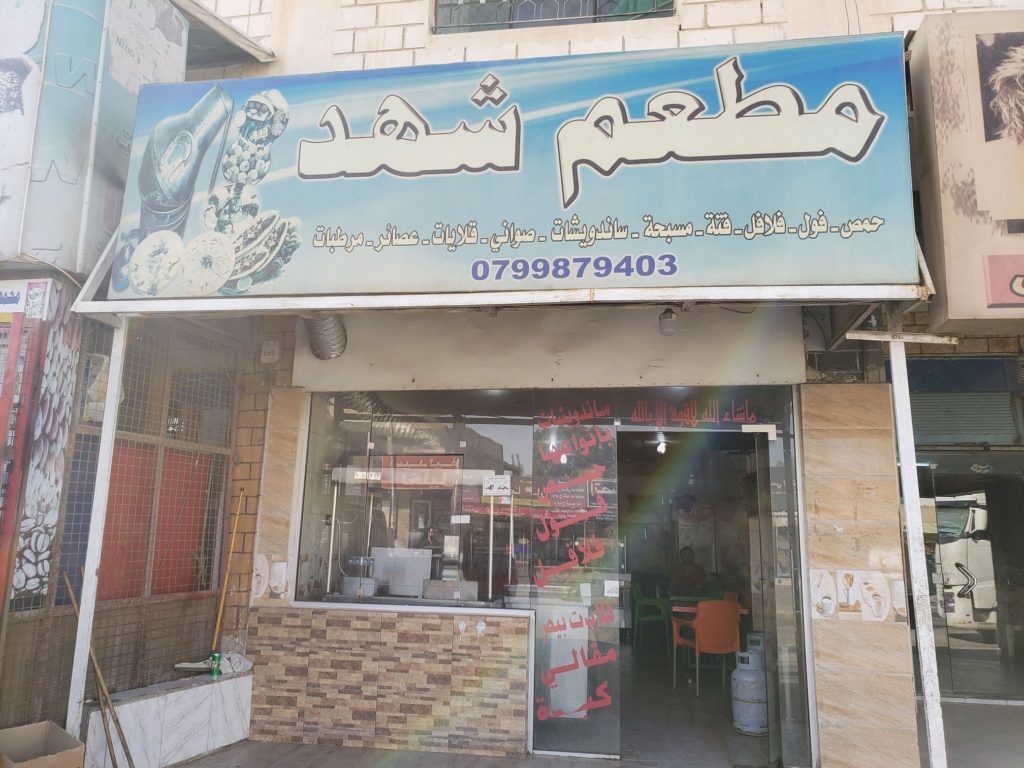
In Azraq there is a well established wetland but it cost a lot for foreigners to go for a walk in there and we didn’t have time to explore it so we left again and visited the Azraq Castle, famous for its stone doors.
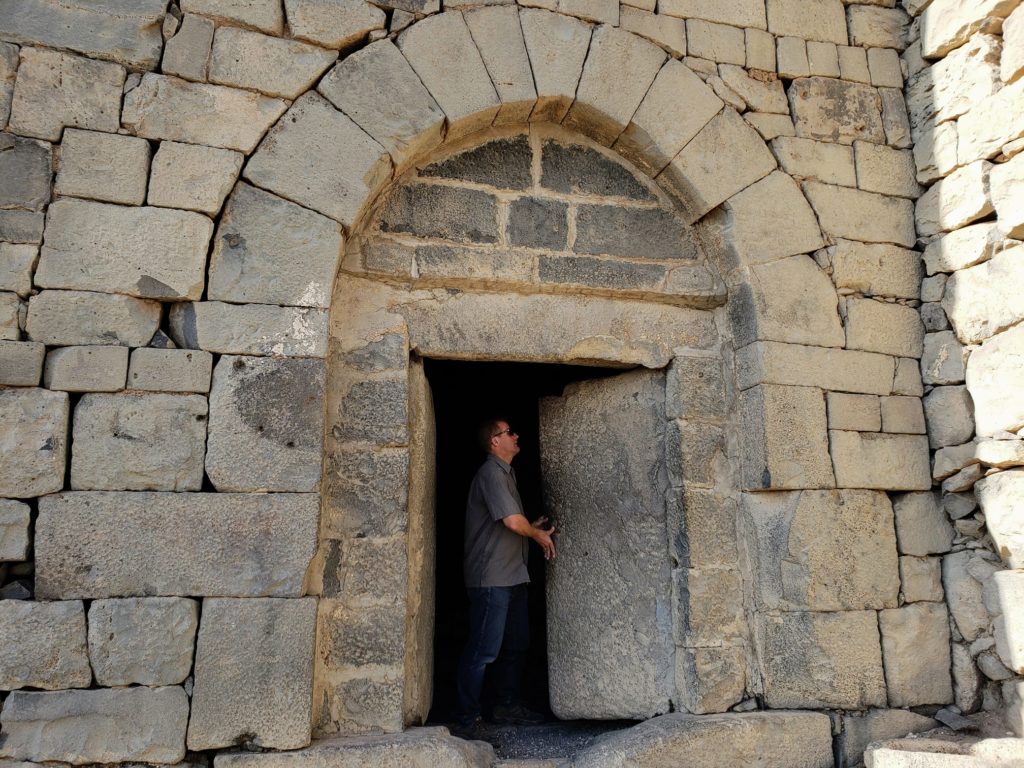
These were really cool to see and move! Azraq castle was in a strategic military location at the head of an important caravan trading route. First built by the Romans around the year 200 and then rebuilt by an Islamic leader in the 13th century.
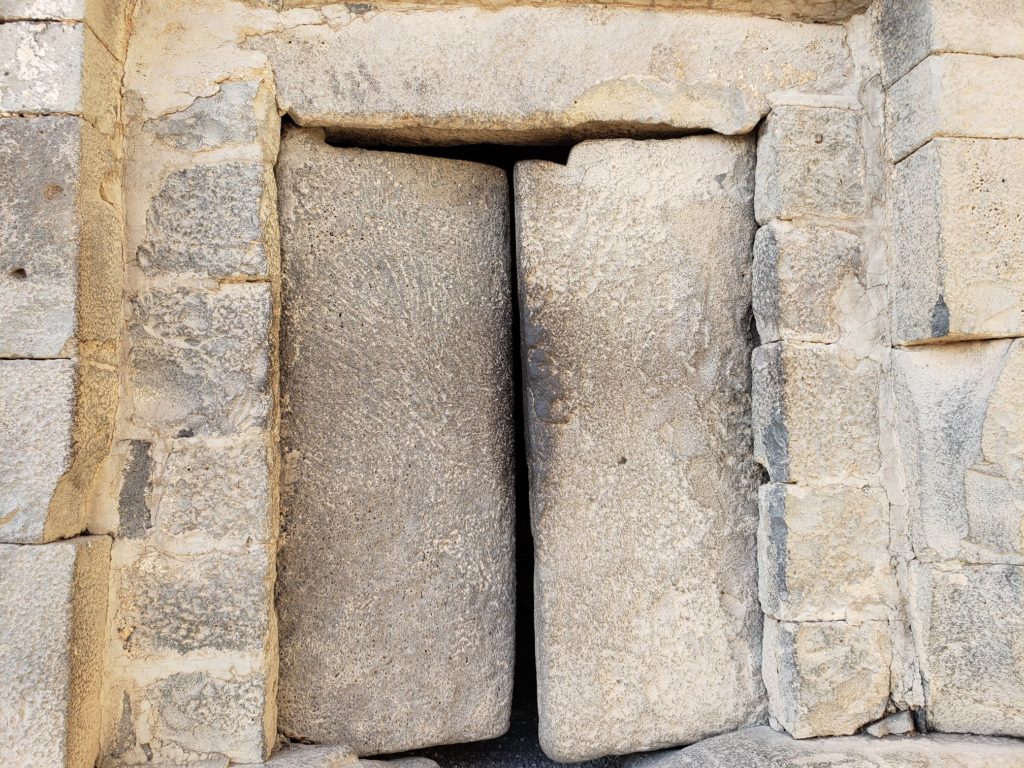
Apart from the cool stone doors, the other thing that struck us were the remaining rooves and how they were made out of stone. Incredible structure but wouldn’t want to be under those in an earthquake!
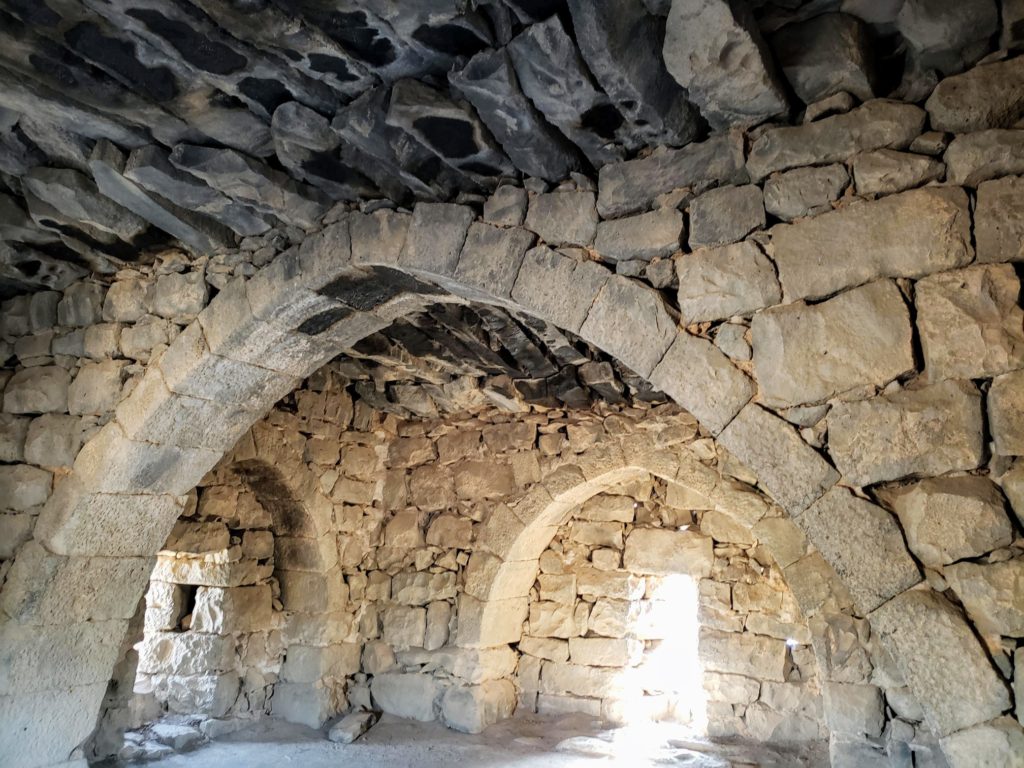
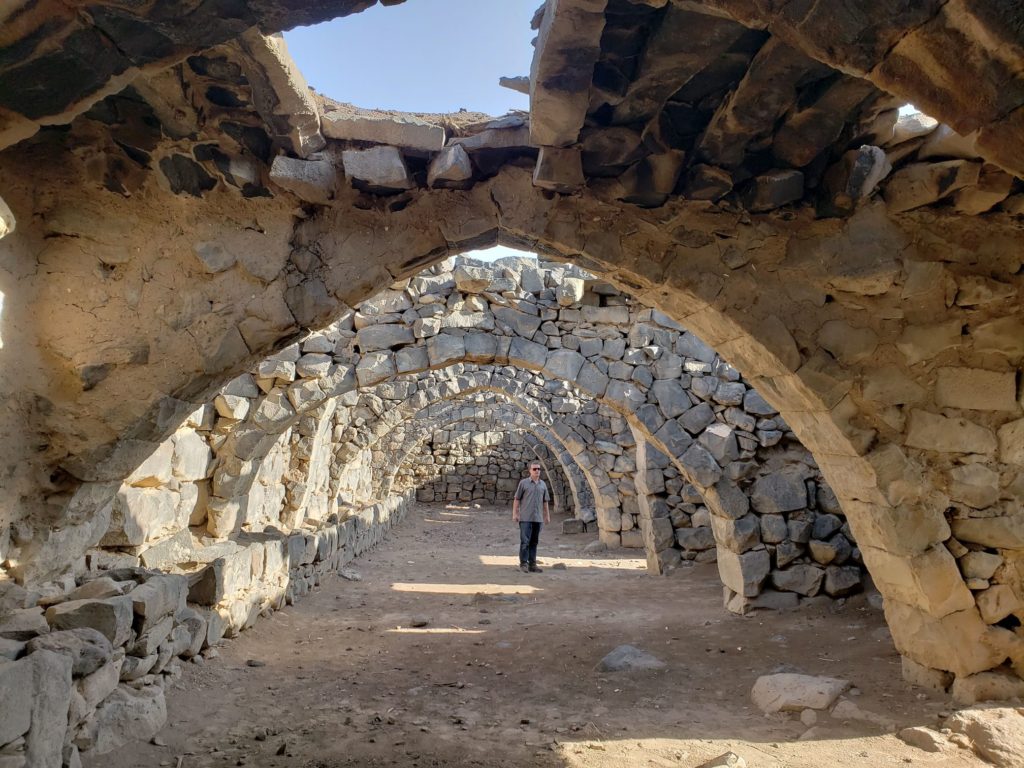
In one part of the castle there was a collection of stone slabs with engravings, of geometric patterns, animals, birds and floral motifs. These were displayed here but part of a collection of 35 carved stones, found below a platform on one side of an ancient pool in Azraq – now part of the wetland area. Some were shaped so they could interlock with each other.
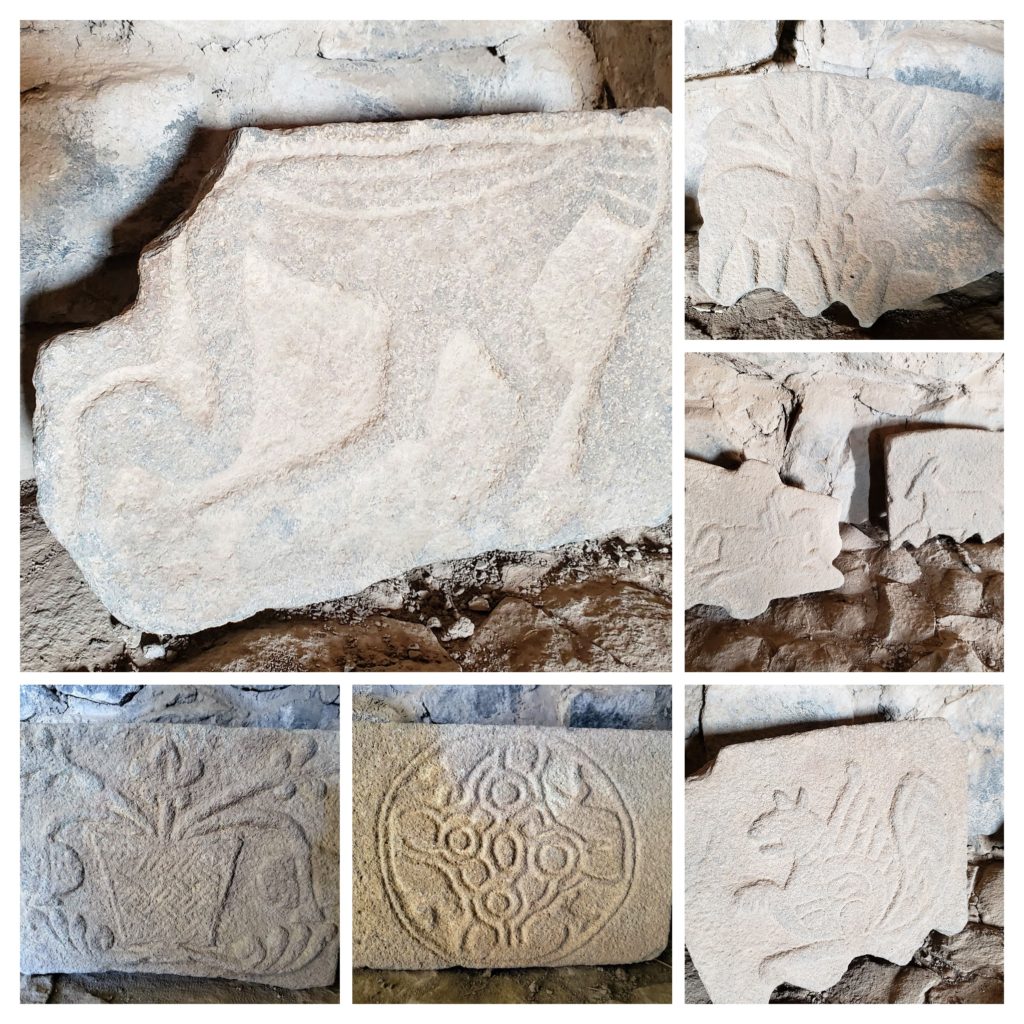
It is not known from what era these carvings are from – could be Roman, Byzantine or Umayyad!
As you can see in the photo below, the fort was quite big but there wasn’t much in the middle.
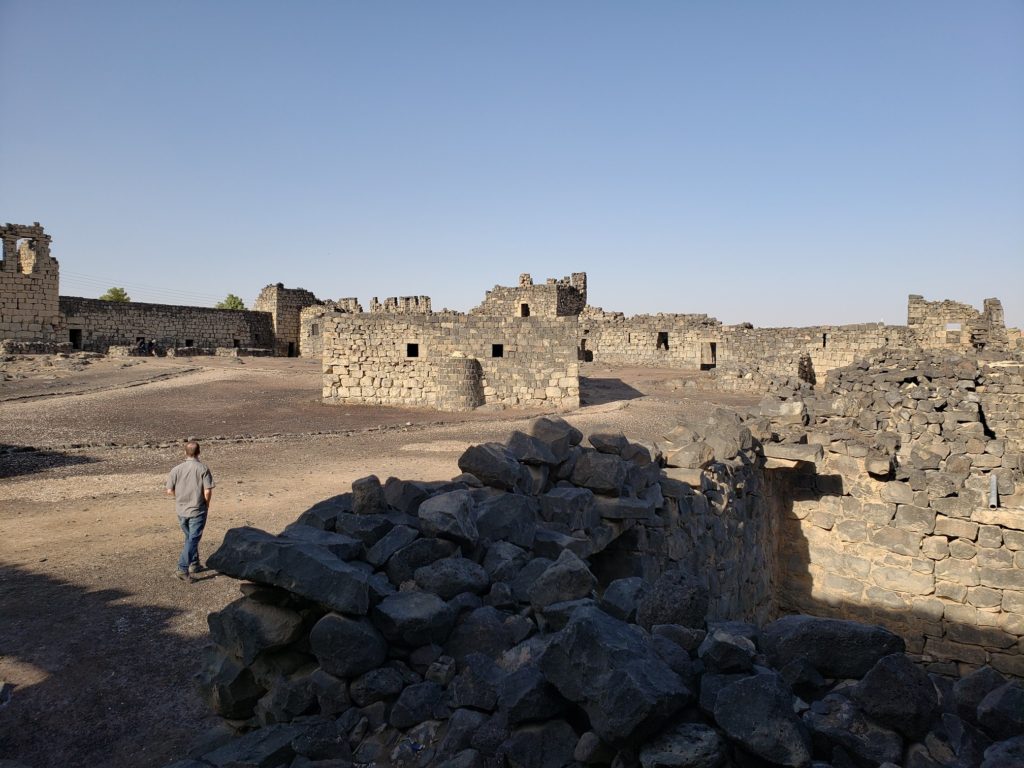
The last castle we saw before the sun went down was Qasr al-Hallabat which was originally a Roman fortress from the second century. It was one of many forts on the Roman Highway connecting Damascus to Aila (modern day Aqaba) via Petra and Philadelphia (modern-day Amman).
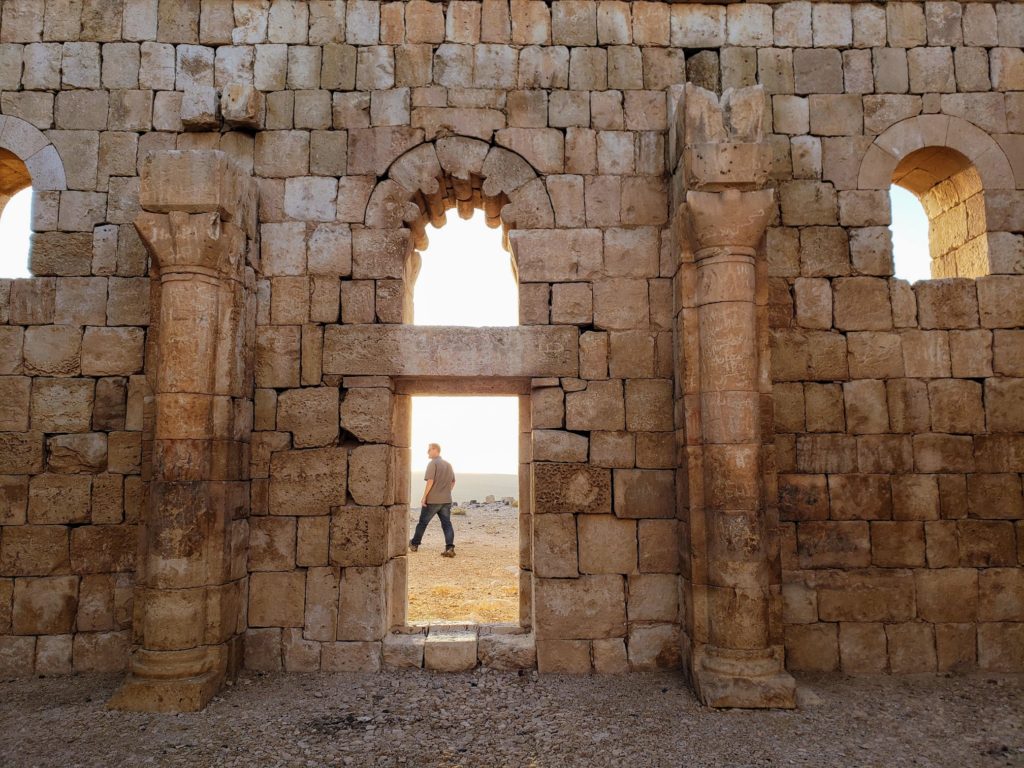
In the 8th century the Umayyad caliph ordered the Roman structures to be demolished so the site was then redeveloped as a military site and became one of the grandest of the Umayyad desert complexes.
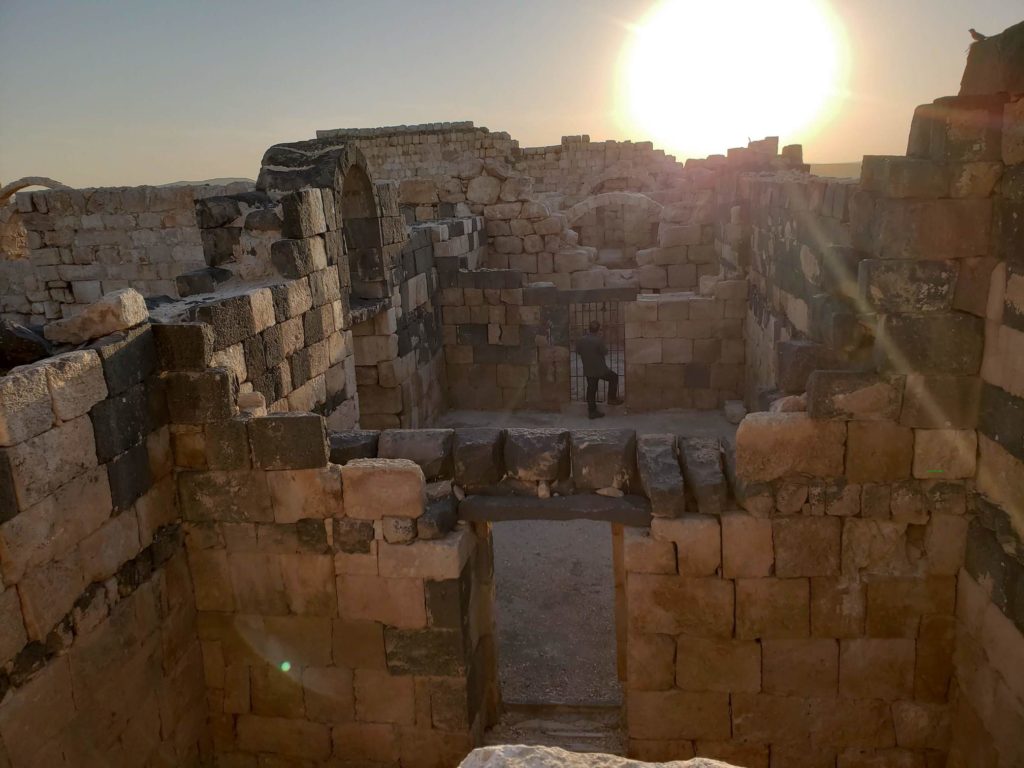
Qasr al-Hallabat included a mosque, a complicated water system including a large reservoir, bathhouse and 5 cisterns and a large square black basalt and limestone palace with towers at each corner.

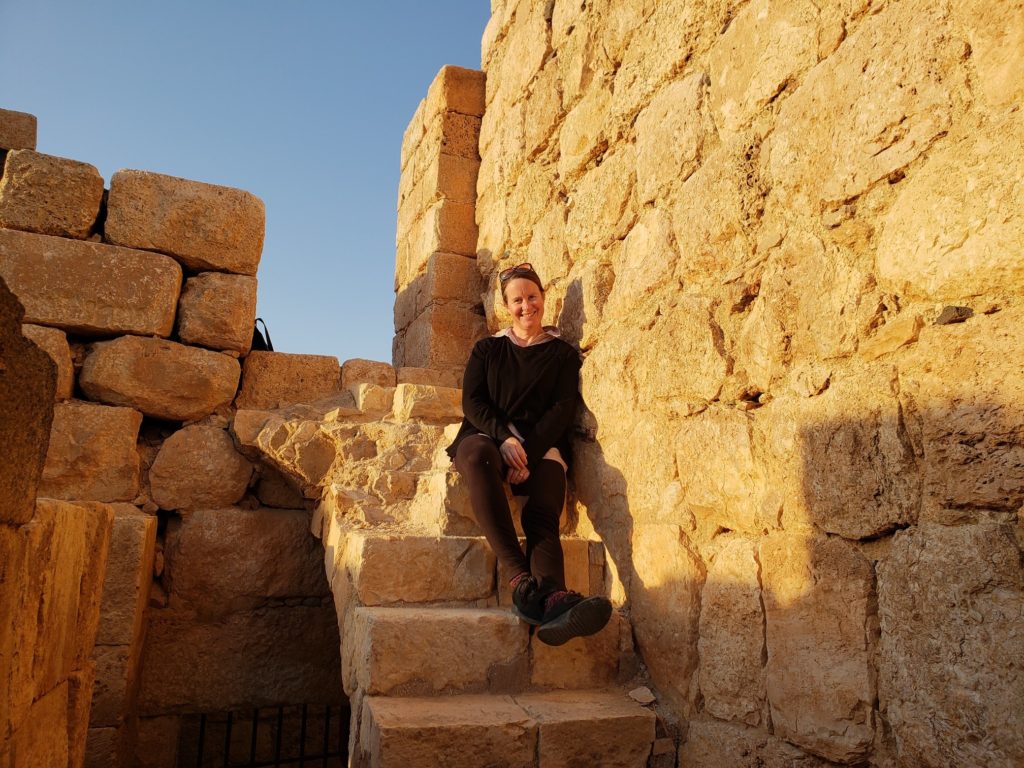
The structures were grand and further enhanced with decorative mosaics depicting an assortment of animals, detailed frescoes and stucco carvings.
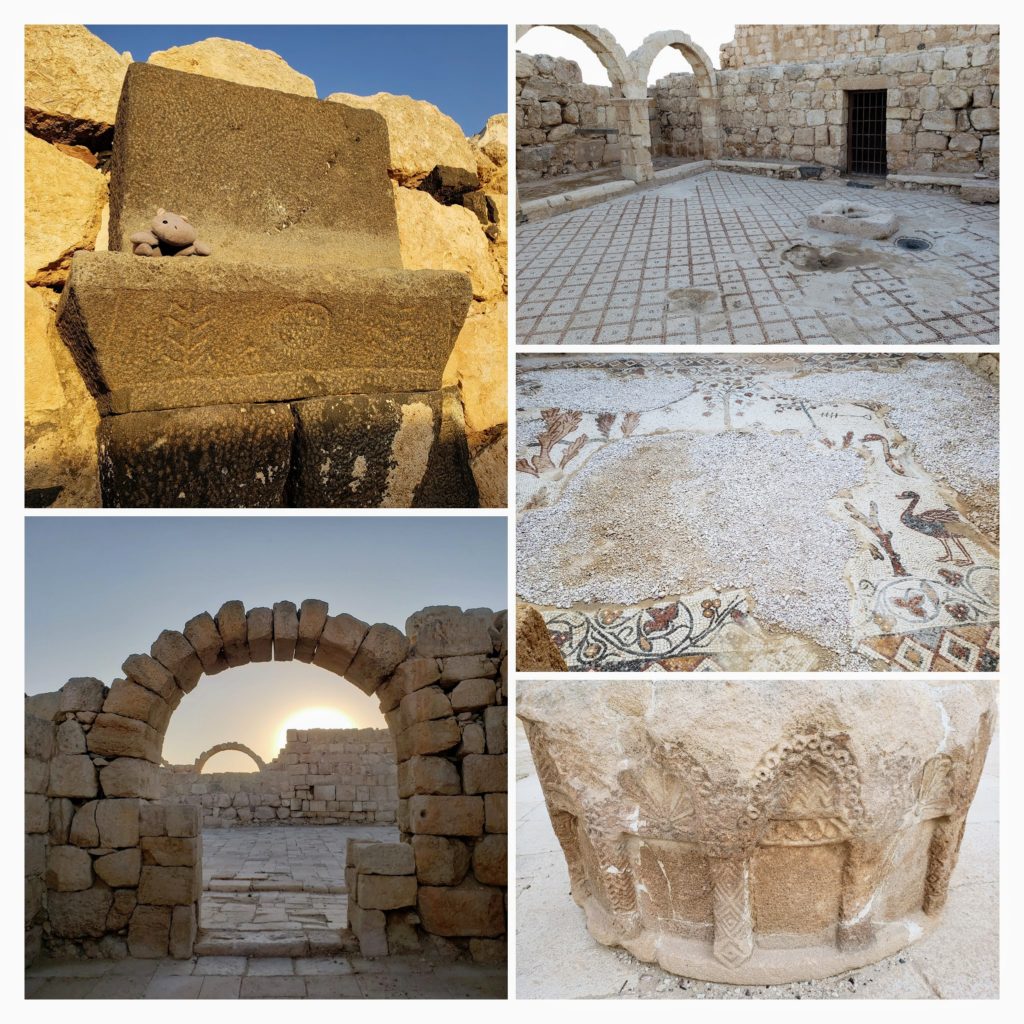
That was the end of the Desert Castle tour – there was another one near to the Syrian border but the sun had gone down so we just headed for our accommodation in Jerash.